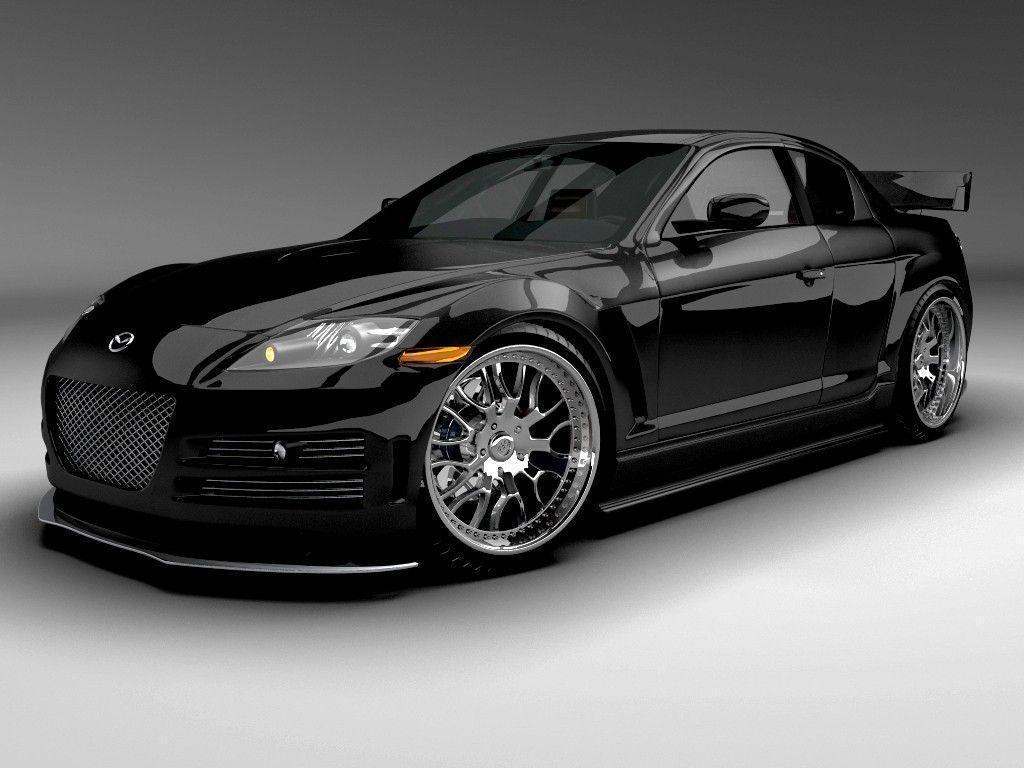
The Toyota Camry has been a popular family vehicle for many years. Because it is incredibly dependable, it is one of America’s most popular automobiles. The new 2022 Toyota Camry, introduced 3.5 decades ago, was anticipated to carry on a long tradition of impressing customers and ranking among the best cars on the road. According to the carmaker, this vehicle is the “solution for the common commute.”
However, there will inevitably be a few lemons in the mix. The Camry has flaws, like any other automobile, which could jeopardize its reputation as a reliable car. Following a thorough investigation, we identified the following problems as being widespread across specific generations of Camry cars.
Common Problems With The Toyota Camry
The National Highway Traffic Safety Administration (NHTSA) receives the most grievances from drivers regarding forward collision avoidance, who cite alarming safety issues. Problems with the electrical system and outdoor lighting are also very prominent.
Additionally, there is a particular concern about structure and visibility. According to a Virginian 2022 Toyota Camry owner, the mirror housing covers on both the driver’s and passenger’s sides are melting. Asserting that “the failure was due to climate,” Toyota refuses to replace the covers under warranty.
Consumer Reports break down vehicle trouble zones. For example, older models of Camrys with poor reliability sometimes have issues with the fuel system, the brakes, the paint or trim, and the vehicle’s structural integrity.
Complications With The Brake System
Owners have observed a few ways the common Camry brake problem issues present themselves. The most frequent reports are shown below.
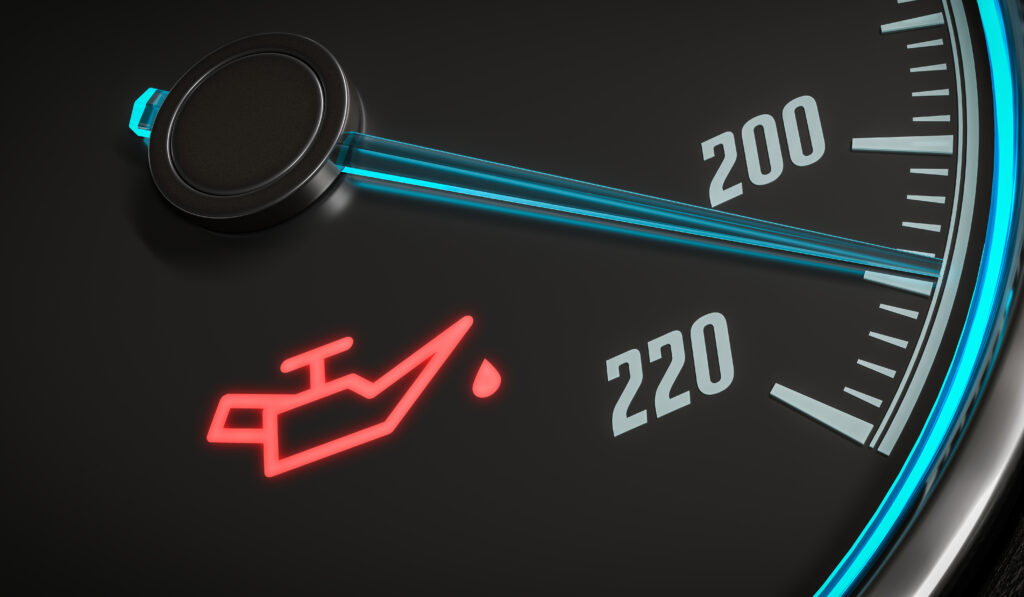
Frequent Brake Failure
Brake failure occurs intermittently and renders the brakes inoperative. Any braking failure risks making drivers lose control of their vehicles.
Brake Warning Light Stays On
The ABS light never goes out. When the brakes are used, the Anti-Lock Braking System (ABS), a part of the braking system, keeps the wheel from locking up. If the ABS light is on, using the brakes will not result in a correct system engagement.
Although driving with the ABS light on is technically possible, it is not recommended because it can be hazardous.
Squishy Brake Pedal
The brake pedals might turn mushy (sink to the floor) or stiff before they stop responding (have to press down on the pedal heavily).
Car Rattles When The Brakes Are Used
When drivers apply the brakes, they claim that their automobiles shake or lurch. While you can still drive the car during this condition, the issue can occasionally be so bad that owners find driving challenging.
Potential Causes And Solutions For The Brake Issues
Toyota Camrys’ brake issues could be a result of a variety of things.
- Defective brake actuator.
- Damaged ABS module.
- Failed braking parts, including brake pads, discs, cables, cylinders, lines, rotors, and calipers.
Only keep driving if you think your car’s brakes are working properly. Then, to find the root of the issue and the best course of action, take it to the repair shop for a proper diagnosis as soon as possible.
Frequently Occurring Transmission Issues
Transmission difficulties are prevalent in Camry models. And this holds for 2000s models as well (2000-present). Recently, transmission issues with the Toyota Camry have been reported more frequently in recent models. Shift delays, stalling, grinding, or leaping during low gear acceleration, shaking while in motion, a detectable burning smell, or whistling noises from under the hood are all symptoms of transmission troubles.
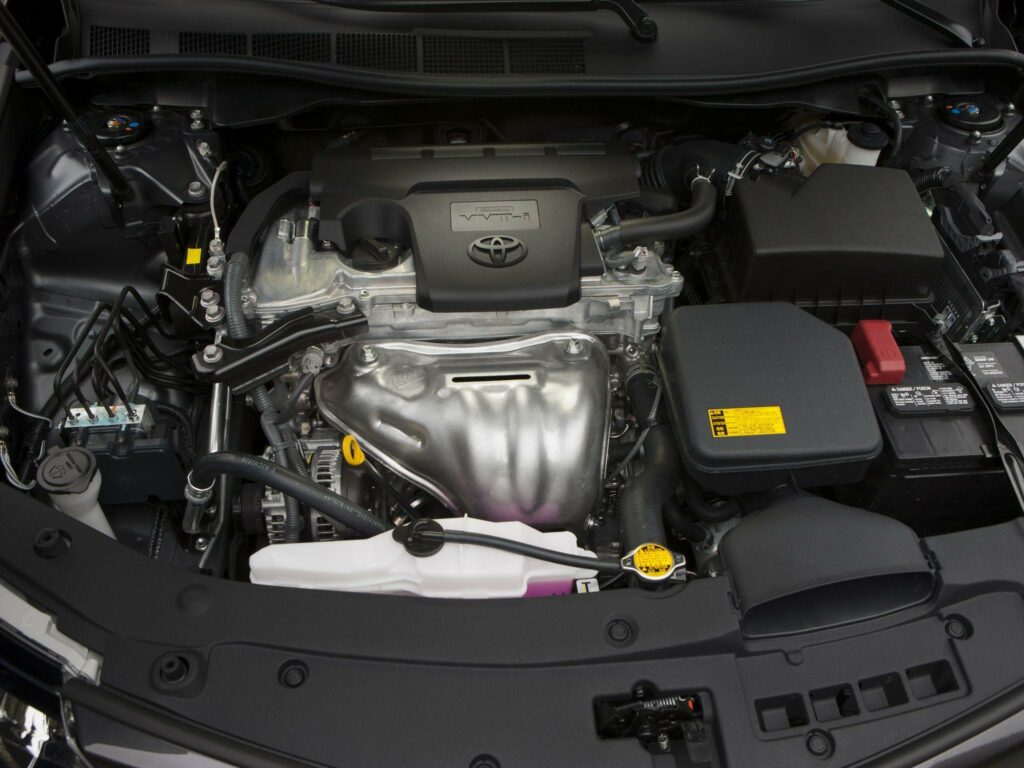
As a result, multiple consumers have lodged transmission complaints. Problems include:
Transmission Slippage
Unpredictable acceleration and deceleration are caused by the transmission shifting in and out of gear. According to consumers, the automobile stops unexpectedly and accelerates when the gas pedal is pressed.
The gears can change without driver intervention. For example, an automobile in fourth gear may downshift to first gear suddenly. Losing speed might harm the car’s occupants, especially on highways.
Having Trouble Changing Gears
The afflicted Camry cars, according to drivers, have a rough and challenging gear-shifting operation. Any attempt to change gears causes the automobile to wobble and lurch.
Transmission Failure Stalls The Car
In extreme circumstances, the transmission may seize, causing the vehicle to stop abruptly. There have been reports of transmission failures occurring when drivers were stopped at traffic signals or in line. Drivers in these situations had no choice but to tow the car.
Long Engagement Period
Users must wait several minutes for the car to transition from Park to Drive because the gears take so long to engage. In such circumstances, the engine will turn over, and its RPMs will rise, but the vehicle will not move.
Other times, despite the driver’s attempts to change gears, the transmission remains inactive. Users have described it as:
The transmission responds slowly and acts as if it is unsure which gear to select. According to drivers of impacted vehicles, the transmission will lose all speed and shift into neutral in the middle of a trip. The automobile will eventually shift into gear and accelerate after a while.
The Vehicle Vibrates At A Slow Speed
Some Camry vehicles allegedly shake or rattle when traveling at low speeds (30-45mph). It feels like you’re driving over a rough patch of the road when there are no obstructions at all.
Potential Roots And Solutions For The Transmission Issues
Across several model years, different factors contribute to transmission issues. It might be a torque converter malfunction. The transmission won’t work if the torque converter’s needle bearings, clutch, solenoid, or seal are broken.
A damaged torque converter often requires $500 to $1000 in repairs. The torque converter is inexpensive in and of itself, but labor charges might be high. It takes a mechanic’s expertise to replace a torque converter because it is a complex and time-consuming process.
On other vehicles (like the 2018 model), the issue can result from a malfunctioning auto computer (Powertrain Control Module). The PCM controls the transmission; if it has a problem, the transmission won’t work correctly.
If a defective PCM is the cause of your Camry’s gearbox issue, have the vehicle repaired at a dealership. For the problem’s resolution, Toyota published a TSB advising dealership technicians to reset the PCM.
In the worst-case scenario, you have three options for fixing the transmission:
- Invest in a used transmission
- Rebuild the old transmission using new components.
- Replace the transmission entirely.
The price to fix a transmission issue can vary, ranging from Toyota Camry gear change troubles to decreased fuel efficiency. To acquire an accurate diagnosis and plan of action, it is always best to visit a Toyota-approved service center or dealership. Asking what kind of repair you can perform while you’re there will also help ensure that your transmission problems don’t recur.
Starter Issues
A starter failure is one of the most prevalent Toyota Camry issues. Most owners just said that their automobiles would suddenly stop starting one day. The owners may have thought it was random, but several primary causes exist. Dead batteries are most likely the root of your Toyota Camry’s starting issues, followed by possible alternator or starter difficulties.
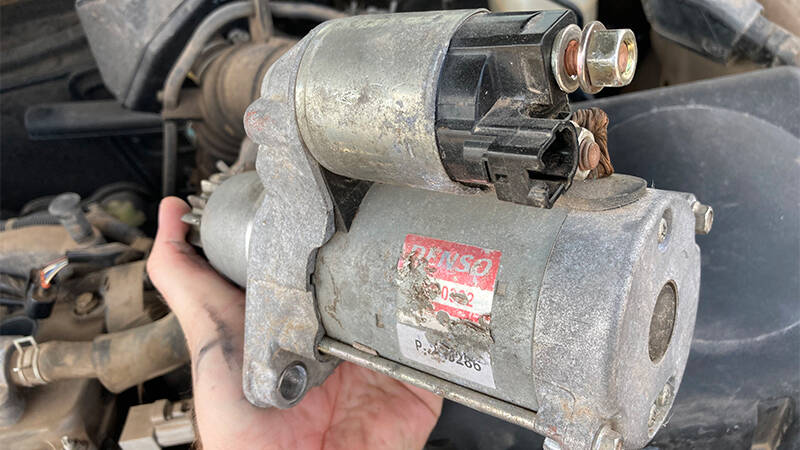
Possible Causes And Fixes For The Starter Issues
The starter, alternator, or battery are typically replaced to fix most of the no-start problem. However, sometimes sanitizing the connections or fixing the fuel or ignition system will work. You can learn more about the precise solution you need by having a skilled mechanic diagnose the problem.
Over the years, a few typical Toyota Camry issues have surfaced. However, the Camry has been and will continue to be one of the most popular cars in the US because of its solid reputation for being dependable, safe, and gas-efficient.
Car Uses Too Much Oil
Toyota Camry owners, namely those who own versions from 2006 to 2011, alleging their cars’ engines burn oil quickly. The owners who are upset claim that the vehicles use up to a quart of oil every 1,200 miles and require continuous oil changes, which is ludicrous. Users claim that there are frequently no visible or internal leaks, indicating an engine issue.
Smoke coming from the exhaust pipe, sluggish acceleration, and subpar vehicle performance are all issues related to excessive oil use. Others have reported engine seizures, catalytic converter damage, and early automobile stalling (due to engine failure). Low oil levels might cause the engine to blow up or knock in extreme situations.
In 2011, Toyota issued a Technical Service Bulletin admitting that some Camry models’ engines were using too much oil. According to the TSB, the 2AZ-FE engines on vehicles manufactured between 2006 and 2011 are susceptible to excessive oil consumption.
Factors At Play And How To Fix Them
Numerous technical analyses link the issue with oil consumption to malfunctioning oil pistons and piston rings. These parts appear to have a flaw in their design that accelerates the engine’s oil consumption.
At one point, Toyota acknowledged that the oil piston assembly was defective and offered to install updated piston assemblies in Camry vehicles. Even so, your car may exceed the warranty’s coverage threshold. As a result, the following suggestions will assist you in dealing with the issues:
- Routinely check the oil level.
- Replace the piston rings and oil pistons.
- Rebuild all of the machine’s damaged components.
- Completely replace the Engine.
AC Problems

Owners of 2012, 2013, and 2014 Camry models claimed that the vents for the air conditioning had a musty smell. To fix the problem, most owners had to have their ACs serviced. The prevalence of this problem led to the filing of a class-action lawsuit against Toyota, which alleged that the Camry’s air conditioning systems were susceptible to mold development.
Additionally, Camry owners reported that the heater or AC compressor in their cars had ceased blowing hot air. The good news is that owners can fix it easily by swapping out the faulty part.
Ineffective Door Locks
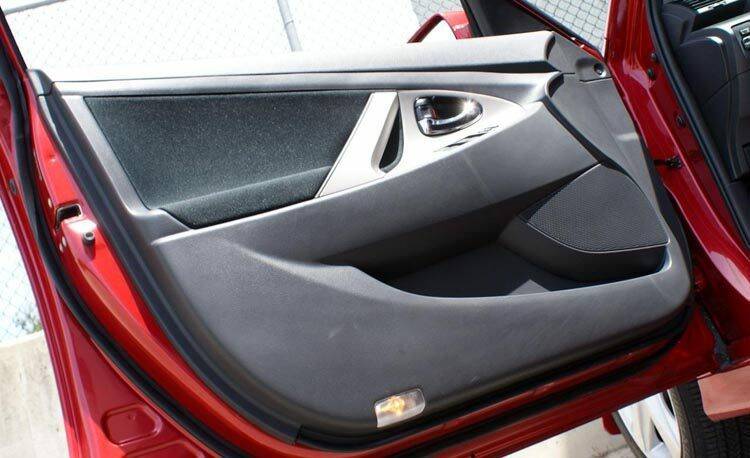
An issue frequently reported with 2011 Camrys was that the door locks stopped working after about 85,000 miles. The door would occasionally not lock or unlock, which is quite unsafe. The most frequent fix, which fortunately doesn’t cost much, is to replace the door lock actuator.
Besides the door locks, several Camry owners have experienced problems with the interior components and accessories. Melting dashboards and broken sun visors are two of the more noticeable problems. Even though they’re inconvenient, you can replace the broken components.
Inadequate Protection For Rear Speakers
Typically, after extended exposure to the sun, the plastic Toyota utilized to make the rear speaker covers breaks or crumbles. The speaker covers need to be changed as soon as possible; that’s the best course of action.
Head Gasket Leak
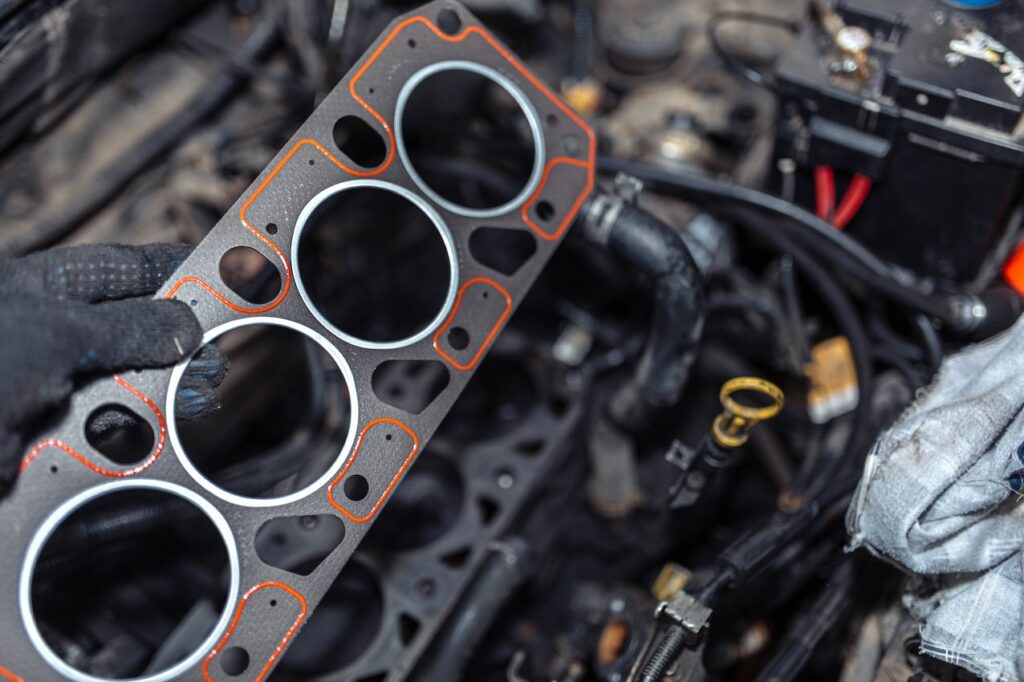
The head gasket design of the 2002–2006 Camry can occasionally lead to major oil leaking issues. Smoke emerging from the engine compartment, contaminated coolant, white smoke from the exhaust pipe (even after the car has warmed up), and, of course, a broken engine are all signs of a faulty head gasket.
The best thing to do is to check your coolant and oil routinely. Get your car to a repair facility as soon as possible if the coolant or oil starts to appear particularly dark or milky.
Models Of The Toyota Camry To Avoid
The Camry has experienced some difficult times, from engine flaws to recalls that caused owners and manufacturers alike much stress. Next up, we’ll discuss the years you should try to avoid and why.
Toyota Camry (2007)
Because it has the most issues, the 2007 model is at the top of the list of Toyota Camry years to stay away from. RepairPal lists problems with automatic transmission as one of the most common complaints. The problem develops when the transmission lags while attempting to accelerate; this can heat the transmission and may necessitate replacement sooner than most drivers prefer.
The 2007 Camry also has issues with a problematic check engine light, missed shifts, and power steering issues. Potential customers should be aware of this even though the complaints are less severe than those for other models.
Toyota Camry (2008)
Although there were fewer concerns about the 2008 Camry, it didn’t improve much. The drivers reported similar gearbox troubles and observed that the check engine light frequently created complications. After the automobile had traveled 100,000 miles, the ignition coil would begin to break, which was one of the most noticeable problems with the 2008 model.
Toyota Camry (2009)
The 2009 model had transmission and check engine light issues despite several documented concerns. Another minor issue in the 2009 model was a sludge buildup around the engine caused directly by using the unchanged oil.
Best Toyota Camry Model Years To Buy
While there are some Camry model years you should try to avoid, there are others you should keep an eye out for and snag if you can. Customers adore Toyota’s reputation for building dependable cars. Even if there have been a few shaky years, here are a few Camry models to look out for:
Toyota Camry (2004)
Reliability, driveability, and general consumer happiness were well-rated for the 2004 Camry. The Camry has a good reputation, and if you can find one with low kilometers, it has a lot of life despite being a 2004 model. For instance, if the transmission is replaced in cars with more than 100,000 kilometers, the vehicle will likely endure a few more years.
Toyota Camry (2013–2015)
The seventh-generation Camry from 2013 to 2015 appeared to be completely bug-free. Numerous consumer reviews give the car a pristine 5-star reliability rating. Additionally, it only had two recalls and received acclaim for consumer satisfaction. The AC system is the sole problem, which after 100,000 miles, began to spew hot air.
Toyota Camry 2021
The 2021 Camry hit the market with a bang as the automaker emphasized design and construction. The 2021 line has much potential and can travel more than 100,000 kilometers. This vehicle is generating headlines for many reasons, including its superior construction and several safety enhancements, demonstrating that the manufacturer returned to the drawing board to address important problems.
Pros and Cons Of Toyota Camry
Pros:
Roomy Interior
The Toyota Camry boasts a spacious interior, making it a genuine family vehicle. There is ample head, shoulder, and legroom for all five passengers sitting comfortably. Seating in the front or back is comfortable, even for taller people.
Amazing Fuel Economy
Performance sometimes needs to be sacrificed when purchasing family vehicles to save on fuel. The Camry is an exception to this. The standard 2019 model sports a 4-cylinder engine with 203 horsepower and an amazing 32 mpg (combined). Additionally, a hybrid is available with even better fuel efficiency ratings.
Comfortable Seating
The Camry variants have soft, roomy seats. To prevent backaches, they also provide lumbar support and are well-cushioned.
Modern Safety Features
Because of their high safety ratings, Camry vehicles are trusted by families. The 2019 Camry model is one of the safest cars in its class and achieved top marks on the NHTSA crash testing. Every Camry model comes with Toyota Safety Sense Package, a high-tech safety system.
The TSSP’s safety measures include the following as well.
- Lane Departure Warning System
- Smart Cruise Control.
- Optional features include top-down parking cameras and blind-spot monitoring.
Dynamic Handling
Although the Camry has previously been referred to as a “boring” sedan, more recent models provide livelier handling and accurate steering.
Opt for the higher, sportier trims like the Camry SE and Camry XSE models if you want a Camry car that is both fun and useful. These vehicles provide a fantastic driving experience because of their meticulously designed suspension and steering systems.
Cons:
- Consuming too much oil.
- Transmission breakdown.
- Unreliable brakes.
The Camry’s Resale Value
| Years Old | Resale Year | Mileage (Miles) | Resale Value |
| 1 | 2022 | 12,000 | $31,263 |
| 2 | 2023 | 24,000 | $30,393 |
| 3 | 2024 | 36,000 | $29,695 |
| 4 | 2025 | 48,000 | $28,996 |
| 5 | 2026 | 60,000 | $26,474 |
| 6 | 2027 | 72,000 | $24,144 |
| 7 | 2028 | 84,000 | $22,428 |
| 8 | 2029 | 96,000 | $20,867 |
| 9 | 2030 | 108,000 | $18,924 |
| 10 | 2031 | 120,000 | $17,929 |
Reviewers’ Opinions
“The Toyota Camry has a reputation for dependability, value, safety, and fuel efficiency, making it one of the best-selling and most successful cars in the business. The Toyota Camry has had a mid-cycle redesign to maintain its long-term popularity.” (Source: Motortrend.com)
“For a long time, one of our top picks for family cars has been the elegant Camry. Camry continues to be known for its great durability, predictable handling, superb brakes, and quiet, comfortable ride.” (Source: Consumerreports.com)
To Sum Up
When shopping for a used vehicle, it’s usually best to choose a reliable brand. Even so, prospective purchasers should be aware of a few faults with the Camry. Selecting models with few to no incidents and those with fewer than 50,000 kilometers is always a smart idea.
When you’re uncertain, you don’t need to figure it out yourself. We have gathered all the necessary details about the Toyota Camry in this article to assist you in making an informed choice.



